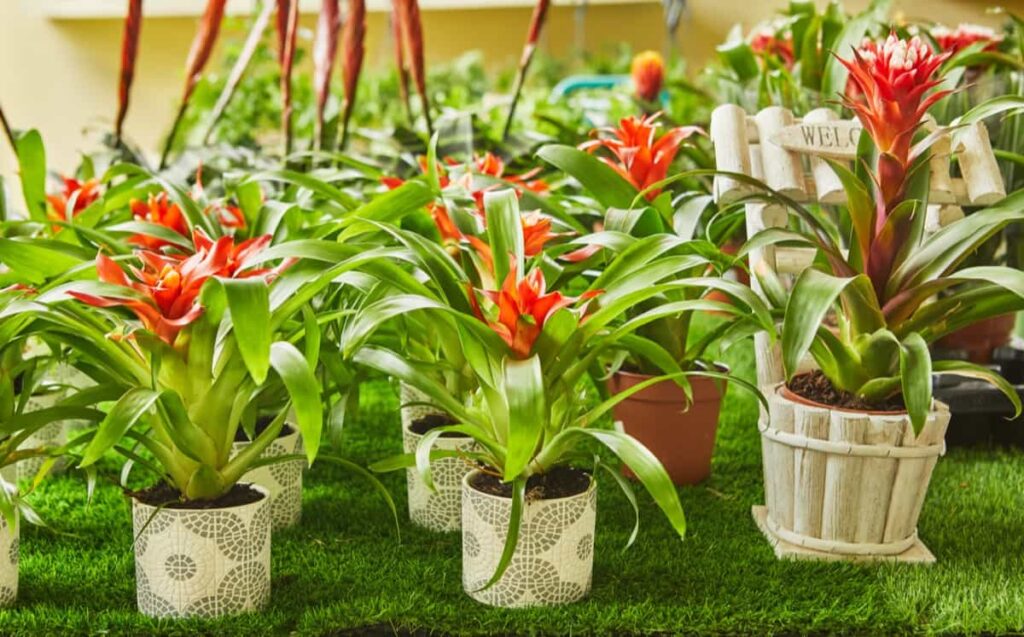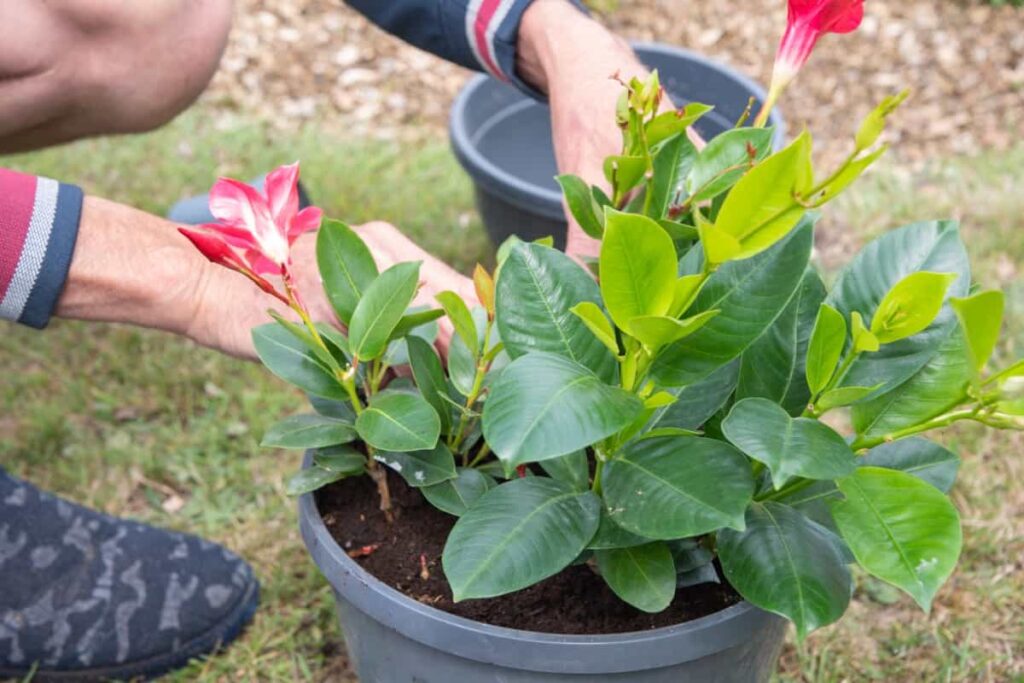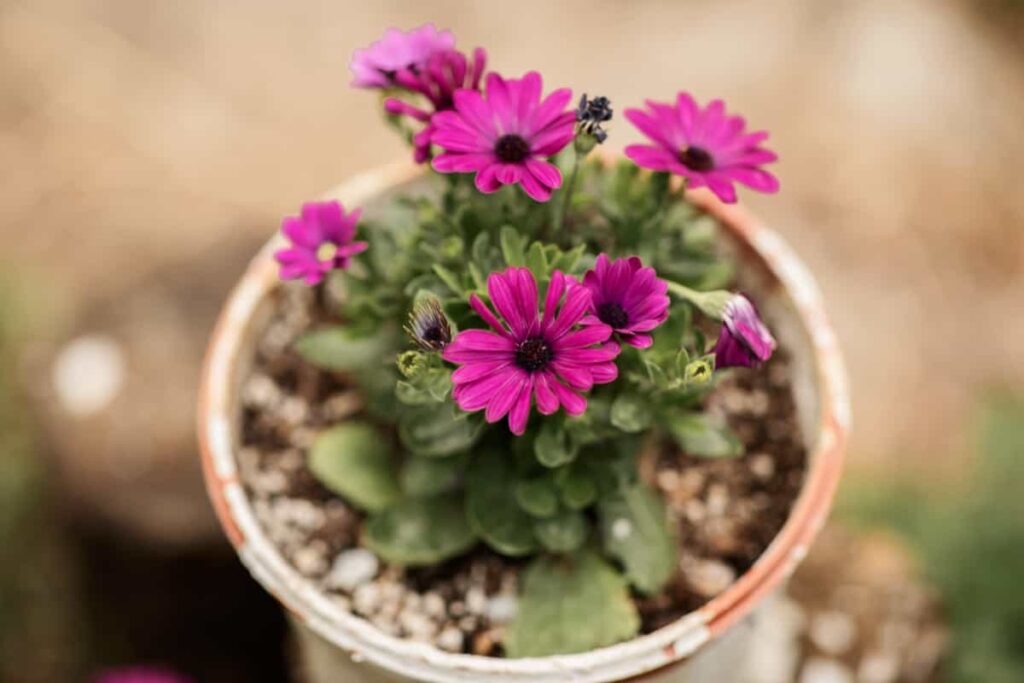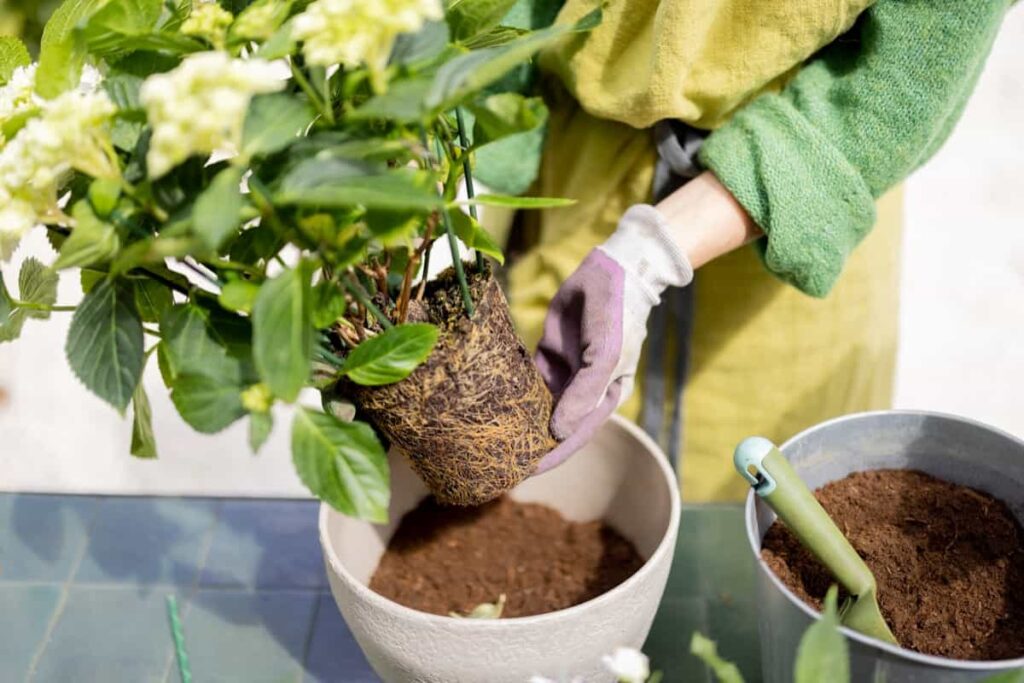Potted plants bring life and beauty to any space, but when they don’t bloom, it can be disappointing. Understanding what factors may be hindering their flowering potential is key to helping them thrive. The lack of blooms in potted plants can be frustrating, but there are different ways to encourage them to display their vibrant colors.

Reasons Why Your Potted Plant is Not Blooming
Insufficient Sunlight
Assessing Sunlight Needs
Different plants have different requirements, so check the care instructions for each one. If your indoor potted plants aren’t getting enough light, consider moving plants closer to a window or investing in grow lights. Rotate your potted plants regularly to ensure all sides receive adequate light exposure.
Providing Adequate Light Indoors
Potted plants depend on sunlight for photosynthesis, which is crucial for blooming. Without enough light, they might not produce flowers as expected. Keep an eye on any signs of stretching or pale leaves – these are indicators of insufficient light. Don’t worry if you’re struggling with natural light indoors; there are plenty of artificial lighting options available that can mimic the sun’s rays effectively. Remember to adjust the intensity and duration according to your plant’s needs.
Improper Watering Practices
Overwatering Effects on Blooms
Improper watering can be a major culprit behind your potted plant not blooming as expected. Overwatering suffocates the roots, leading to decreased oxygen levels and nutrient uptake, ultimately affecting bloom production. The waterlogged soil creates a breeding ground for root rot and other diseases, hindering the plant’s ability to thrive.
Addressing Underwatering Issues
Underwatering can also stunt blooming in potted plants. When deprived of adequate moisture, plants struggle to carry out essential functions like flower production. Wilting leaves and dry soil are common signs of underwatering that should not be overlooked. To address overwatering issues, ensure proper drainage in your pots and allow the topsoil to dry out between waterings.
Nutrient Deficiencies
Identifying Nutrient Deficiency Symptoms
Nutrient deficiency symptoms often manifest in yellowing leaves, stunted growth, or faded blooms. To tackle this issue, consider fertilizing your potted plants regularly. By identifying these deficiency symptoms early on and providing the necessary nutrients through proper fertilization methods, you can help your potted plant thrive and bloom beautifully.
Fertilization Methods for Potted Plants
When it comes to fertilization methods for potted plants, there are various options available. You can opt for slow-release fertilizers that provide nutrients gradually over time or choose liquid fertilizers for a quick nutrient boost. Make sure to follow the instructions on the fertilizer package carefully to avoid overfeeding your plant – just like we watch our nutrition intake.
Pot Size and Root Bound Conditions
Checking Root Boundness
When a plant becomes root-bound, its roots outgrow the container, leading to restricted growth and bloom production. Root-bound conditions can restrict nutrient uptake and water absorption, leading to stunted growth and lack of blooms in potted plants. To check if your plant is root-bound, remove it from its pot gently and inspect the roots. If they appear tightly packed in a circular pattern or are visible on the surface, your plant may be root-bound.
Repotting Procedures
Repotting procedures involve selecting a slightly larger pot with proper drainage holes, loosening the roots gently, and adding fresh soil to provide more space for growth. By addressing root-bound conditions promptly through regular monitoring and repotting when necessary, you can help your plants thrive and promote blossoms in indoor potted plants.
In case you missed it: 10 Homemade Fertilizers for Money Plant: Natural Ways to Nourish Potted Golden Pothos

Pest and Disease Infestations
Common Pests in Potted Plants
Pests and diseases in your potted plants are pesky critters like aphids, spider mites, and mealybugs that seem to find their way into our beloved green space effortlessly. Identifying these common culprits early on is key to preventing a full-blown infestation.
Keep an eye out for yellowing leaves, unusual spots, or sticky residue – these could be signs of trouble brewing. Once you’ve pinpointed the issue at hand, it’s time to take action. From natural remedies for potted plants not flowering, like neem oil sprays, to organic insecticidal soaps, there are plenty of ways to combat unwanted guests without harsh chemicals.
Disease Identification and Treatment
Fungal infections like powdery mildew or bacterial leaf spots can wreak havoc on your plant’s health if left unchecked. Proper ventilation and avoiding waterlogged soil can help keep these issues at bay. Remember, a healthy potted plant is better equipped to fend off invaders naturally. Stay vigilant and proactive in protecting your potted plants from unwanted visitors.
Temperature and Humidity Control
Maintaining Optimal Climate Conditions
Temperature and humidity play a major role in their blooming journey. Keep an eye on the thermometer to ensure they are comfortable – most plants thrive in moderate temperatures. Humidity levels can also impact your plant’s ability to blossom. Some plants love it humid, while others prefer drier conditions.
Protecting Plants from Temperature Extremes
If extreme temperatures are causing stress, consider moving your plant away from drafty windows or heaters. Shielding them from these temperature extremes can make all the difference in encouraging those beautiful blooms to come out and play. Investing in a small humidifier or misting your plants occasionally can help maintain optimal humidity levels, especially during dry winter months.
Improper Soil Conditions
Soil pH and Composition
Soil pH and composition play a crucial role in the overall health and blooming capabilities of your beloved green friends. It’s essential to understand that different plants have varying soil pH requirements. Testing the potting mix’s pH level can help you determine if adjustments are necessary to promote blooming in potted plants.
Soil Aeration and Drainage
Soil aeration and drainage are equally important factors to consider. Compacted or poorly aerated soil can suffocate plant roots, hindering their ability to absorb nutrients efficiently. Ensuring proper drainage helps prevent waterlogging, which can lead to other issues that inhibit flowering.
Pot-Bound or Overcrowded Roots
Root Pruning Techniques
When your plant’s roots outgrow their current home, it can hinder blooming and overall growth. Root pruning is a simple yet effective technique to rejuvenate your plant. By trimming back some of the excess roots, you allow for new growth and better nutrient absorption. Remember to use clean and sharp tools to avoid damaging the root system.
Selecting Appropriate Pot Sizes
Selecting an appropriate pot size is crucial for your plant’s well-being. A pot that is too small will restrict root growth, while a too-large pot can lead to waterlogged soil. Choose a container that provides enough room for the roots to spread comfortably without being excessively spacious.
In case you missed it: 10 Homemade Fertilizers for Tulsi in Pots: Natural Ways to Nourish Potted Holy Basil

Stress from Environmental Factors
Addressing Environmental Stressors
Environmental stressors like extreme temperatures or harsh winds can take a toll on your plant’s ability to produce flowers. It’s essential to address these issues by providing shelter and protection. Consider moving your potted plants to a more sheltered area if they are constantly exposed to strong winds or direct sunlight.
Factors like extreme temperatures, insufficient sunlight, or even pests invading their space can all contribute to a stressed-out plant. To address these issues, try relocating your plant to a spot where it gets just the right amount of sunlight.
Providing Shelter from Harsh Conditions
Creating a barrier with other plants or placing them near a wall can help shield them from harsh conditions. Additionally, using plant covers or temporary structures can provide extra protection during severe weather events. By providing adequate shelter, you can create a more conducive environment for your potted plants to thrive and eventually bloom beautifully.
Age and Maturity of the Plant
Understanding Growth and Blooming Cycles
Understanding the growth and blooming cycles of your potted plants is important for their overall plant health. Different plant species have varying timelines for when they start blooming, so it’s essential to research the specific needs of your plant. Young plants often focus on establishing roots and foliage before diverting energy towards producing blooms.
As they mature, their priorities shift, leading to increased flower production. This natural progression ensures that the plant is ready to reproduce when conditions are favorable. Knowing the specific needs of your plant can help you provide tailored care to encourage blooming at the right time.
Patience and Consistent Care
Patience is important when it comes to waiting for your potted plants to bloom. Rushing the process can cause unnecessary stress on the plant, hindering to production of flowers. Remember that each plant has its own pace of growth and flowering. Consistent care plays a significant role in encouraging blooms from your potted plants.
In case you missed it: 10 Best Drip Irrigation Kits for Potted Plants in India

Conclusion
Potted blooms add a pop of color to your space and also indicate the overall health and vitality of your plant. Blooms attract pollinators like bees and butterflies, promoting biodiversity in your indoor or outdoor space. By addressing the lack of blooming issues in potted plants and providing your potted plant with optimal growing conditions, you’ll soon see those beautiful blossoms gracing your indoor or outdoor space.
- Crops Grown in Summer Season: Best Choices for Summer Gardening
- Organic Pest Control for Tomato Farming
- How to Maximize Sheep Farming Profit
- Broccoli Varieties: Choosing the Right Cultivars for Your Farm
- How to Raise Pigs in Your Own Backyard: A Comprehensive Guide
- Budget Friendly Sheep Shed Ideas: Cheap and Low-Cost Tips
- How Much Do Cattle Farmers Make: Revenue Streams in Cattle Farming
- Management Pests and Diseases in Your Cotton Field
- Sheep Farming Business Plan for Beginners
